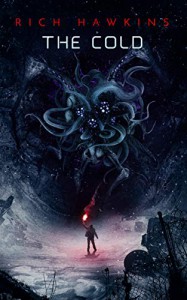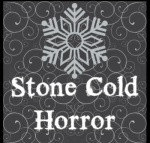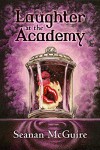



You know how they say that you can't judge a book by its cover? Well "The Cold" has a GREAT cover. Which just shows how true the saying is.
I felt like I was stuck in one of those shoot 'em up games where I can never level up because I can't see that anything is actually happening except a whole bunch of things trying to kill me.
The fault is probably with me but it's not one I can fix. I just didn't get this book.
It reminded me of one of those huge canvasses you see in the Tate where the whole thing is painted densely in red oils. I look at it and go, "It's red. Why?" Better educated souls look at it and go, "It's red and it's art, great Art."
"The Cold" is a canvas painted with blood, more blood and even more blood.
True, there is a lot of white snow to make it easier to see and there are a lot of crushed skulls, decapitations, dismemberments and disembowelments to add variety but I still felt I was wading through blood.
So it's either art or it's a lot of blood. All I saw was blood.
The plot follows a very ordinary twenty-something Englishman (the only odd thing about him is his name - Seth Murphy - not typical for someone born and raised in rural Somerset) on a hellish journey. Seth is on a train in the middle of summer, on his way home from an unsuccessful job interview, when H P Lovecraft-style monsters fall out of the sky, bringing with them the onset of an Ice Age.
The monsters are everywhere and kill everyone.
Seth knows this because he's survived having his train peeled open while in motion and is now trekking home through the snow, surrounded by damage and death and big monsters keep turning up and trying to eat him and the people he's travelling with.
Mostly by luck and the actions of others, Seth manages to journey on without getting killed. Almost everyone around him, especially those who carry weapons and try to organise a rescue, ends up being ripped apart. Seth is so scared he can't think or sleep or do anything other than react and try to survive.
Even by the end of the book, I knew very little about Seth or the people he's travelling with. They're all in shock. If they do talk, it's about how big monsters keep trying to kill them and how this can't be happening but it is.
It's very realistic.
It's not very interesting.
When I was about sixty per cent through the book and Seth has survived yet another attack that left most of his companions in pieces, Seth's one remaining companion, a strong-willed man who is handy with a weapon says:
“So, that’s it, isn’t it?” said Mack. “The end of it all.”
Seth stared off into the white fog beyond them, a part of him hoping that some immense terror would emerge to finally claim them, release them from this state of Purgatory
I shared Seth's reaction. I just wanted it to end too. It didn't. It went on until a whole lot more people were killed by increasingly horrifying creatures.
The prose style is clear and confident. It keeps captures the real horror and shock of extreme violence, unremitting threat, total helplessness and survivor guilt perfectly.
The point of the story seemed to be that, if big monsters dropped out of another dimension, caught us all by surprise, destroyed the weather, were very hard to kill and ate everyone they met, we'd lose and that any ordinary person caught up in the conflict will die or be traumatised or be traumatised and then die.
That's not really a surprise.
So what was the point of this story?
Well, why are some big canvases painted only in red?
No, I don't know the answer to that either.
I do know that, despite the well-described gore, the regular violence, the huge body-count and the wide variety of deeply repulsive monsters eating mankind, I got bored by this book.
I had no reason to care about Seth. Seth had no reason to care about himself.
Perhaps that makes this book art but it's not my kind of art.

 5
5









